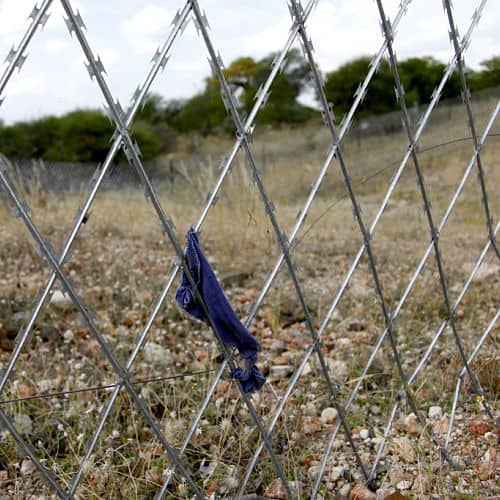The current humanitarian crisis is not only a flux of events that have been occurring recently, despite the impression created by the latest media coverage. Indeed, statistics do report that the numbers of refugees and migrants coming to Europe has increased compared to earlier years. Nevertheless, armed conflicts in certain countries are ongoing, and as European countries are facing some of the consequences within their own territories, all of a sudden leading political figures are asserting that the ‘problem’ must be solved at its root.

People from war-affected countries desperately run for their lives and, paradoxically, largely risk those same lives on their exhausting voyage to a safer location. At the same time the managed migration process dehumanises the image of the struggle for human lives and dignity, and twists it into an image of events that have engendered political crisis and induced fear from destabilising European democracy and our way of life.
Individuals and numerous civil rights organisations are crying out that no human is illegal, bearing in mind that anyone who is in need of help is a human being in the first place, and therefore deserves to enjoy certain rights.
This is the approach on which Marie-Bénédicte Dembour emphasises in her new book in When Humans Become Migrants. The creation of the ‘migrant category’ is a key distinction in processing cases, both at the European Court of Human Rights (ECtHR) in Strasbourg, and at the Inter-American Court of Human Rights (IACHR) whose headquarters are in San José, Costa Rica. The author conducted extensive research on the two regional human rights courts and through the three main parts of the book, Foundations, Consolidation and Prospects, she examines and analyses numerous immigration-focused court cases within each institutional context. Being well aware of the wide scope of meaning of the word “migrant”, she stresses that her main interests were those most unprivileged (p. 27).
The first part, Foundations, explores the historical settings and early trends that resulted in the two contrasting approaches of the Courts and the different ways of applying the law. It presents the founding texts of the European and American Conventions of Human Rights which contributed to the different treatments of migrants. Part 2, Consolidation, examines the way in which the migrant case law of the European and Inter-American Courts was integrated in two different directions, especially reflecting on the failure of the European system of human rights to protect everyone in need, regardless of nationality. Dembour refers to this as a new form of institutionalised racism or discrimination at the least (p. 505). Part 3, Prospects, consists of reviewing recent case law in order to track changes in identified trends of the migrant case law of the two Courts, and to predict the potential development in European and Inter-American jurisprudence.
As its subtitle suggests, the book is a Study of the European Court of Human Rights with an Inter-American Counterpoint. Given that these two Courts were established and operate in different social and political circumstances, the author does not suggest a direct comparison of the two, but rather examines the different approaches to migration that these two courts apply. Even though both Courts apply similar human rights standards, Dembour highlights the contrasting biases of the Courts. She criticises the ECtHR’s migrant case law, its approach to migrants as “aliens” who are subject to the control of the state (p. 8), and the Court’s suggestion that migrants are masters of their own lives (p. 504), omitting the limitations of certain marginalised groups of people, and inclining in favour of the state. On the other hand, the Inter-American case law represents the counterpoint in its implementation of the pro-homine approach (p.7). Migrants are primarily conceived as human beings who should be protected, rather than subjects who threaten the state. This judicial method of the IACHR is portrayed as a possible instance of how the European human rights body’s jurisprudence could or should be applied. The critique of the ECtHR is not solely in its approach, but also in its passivity in developing the human rights of migrants: “the great majority of migrant applicants today lose at Strasbourg, just as they did 20, 30, and even 50 years ago” (p. 21). By presenting concrete cases processed at both Courts, examining political and social contexts of the applicants and taking into account the legal norms and processes of the Courts, the author contributes to scholarship critical of the Strasbourg case law, which she recognises as relatively rare.
What I found noteworthy in Dembour’s stylistic approach was the way she takes into account the gender sensitivity in regard to the topic.
She critically notes that female migrants are often overlooked in policy circles and in the academic literature, even more by either using the masculine pronoun or the possessive when referring to a generic applicant. Therefore, she devotes special attention to this issue by deliberately using the feminine in odd-numbered chapters and the masculine in even-numbered chapters, not only when referring to applicants, but also in respect to other nouns as well.
In sum, Dembour offers not only a perspicacious analysis and prudent suggestions, but also raises significant questions such as how the interests of migrants on one hand and of states on the other could be balanced without a bias for either or another (p. 8), or how to regard “the other” as one of our own, create an open and inclusive attitude and set it as an institutional imperative (p. 504). As the title of the Chapter 8 suggests, the fact is that we are all “…equal, but some more so than others” (p. 250). Dembour suggests that we should, therefore, strive to make a change, both in everyday life and within the legal framework, to see migrants as humans too.
References
Statement by UN High Commissioner for Refugees, António Guterres on refugee crisis in Europe. Accessed 20 October 2015.
Refugees/Migrants Emergency Response – Mediterranean. Accessed 21 October 2015.
*********
Featured image by DFID – UK Department for International Development (flickr, CC BY-NC-ND 2.0)











